
After years of there being few alternatives to the Apple-approved LG UltraFine 5K and later the Apple Studio Display in the 27-inch 5K display market, a number of new entrants have recently appeared to offer more options for consumers.
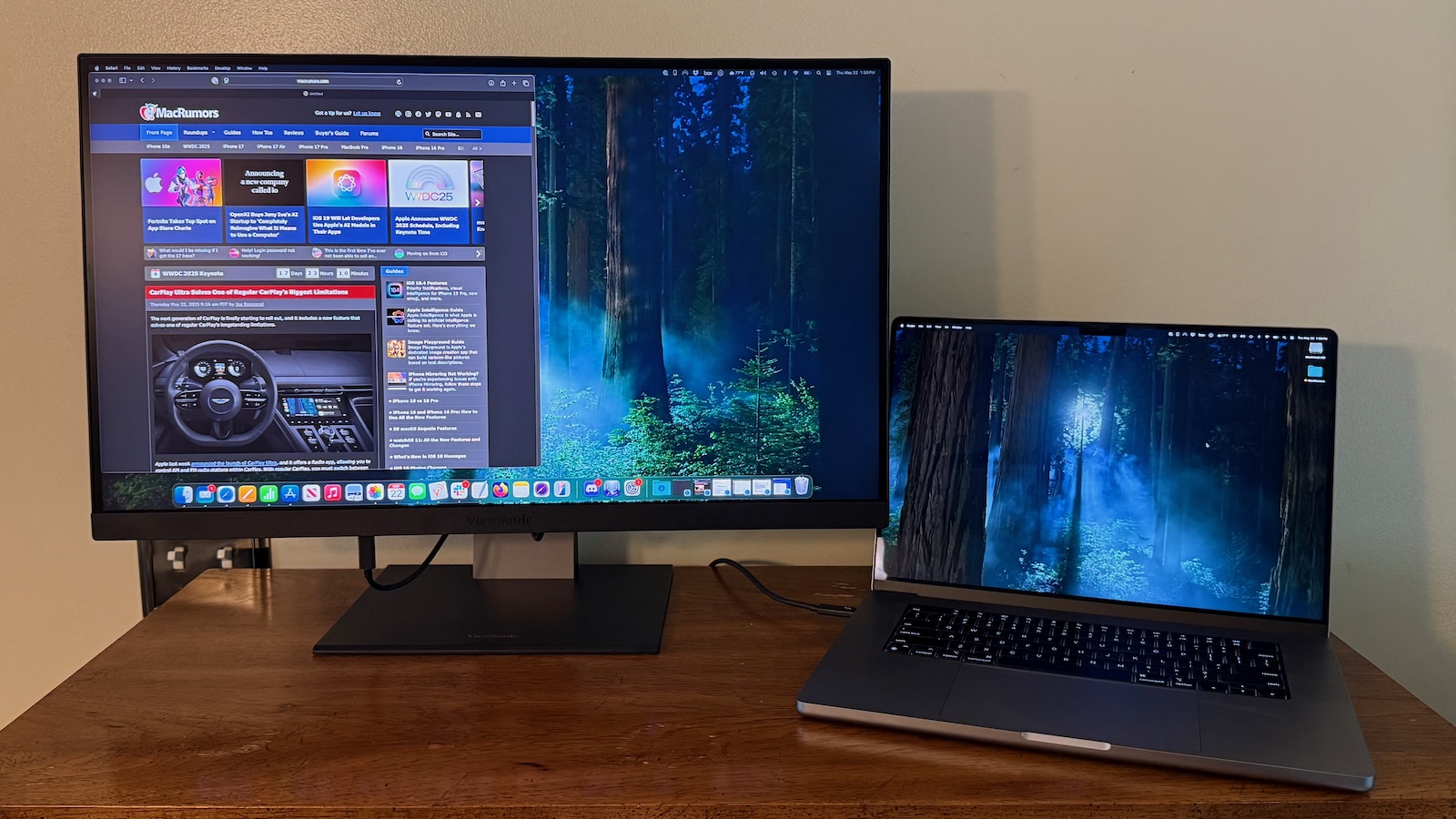
In just the past few months, we've taken a look at the ASUS ProArt Display 5K, the BenQ PD2730S, and the Alogic Clarity 5K Touch with its unique touchscreen capabilities, and most recently I've been testing out another new option, the $950 ViewSonic VP2788-5K, to see how it stacks up.
As background, I have been driving a pair of LG UltraFine 5K displays in my desk setup since 2016, and aside from some image retention issues that I've learned to live with, they work fantastically for my needs, so much so that I haven't seen the need to upgrade to the Apple Studio Display. Content looks great on the UltraFines, they work reliably, and they integrate with macOS to support convenient features such as volume and brightness keyboard shortcuts.
With those as my benchmark, I've been testing the ViewSonic VP2788-5K in daily use alongside one of my LG UltraFines, and I've found both positives and negatives with ViewSonic's offering.
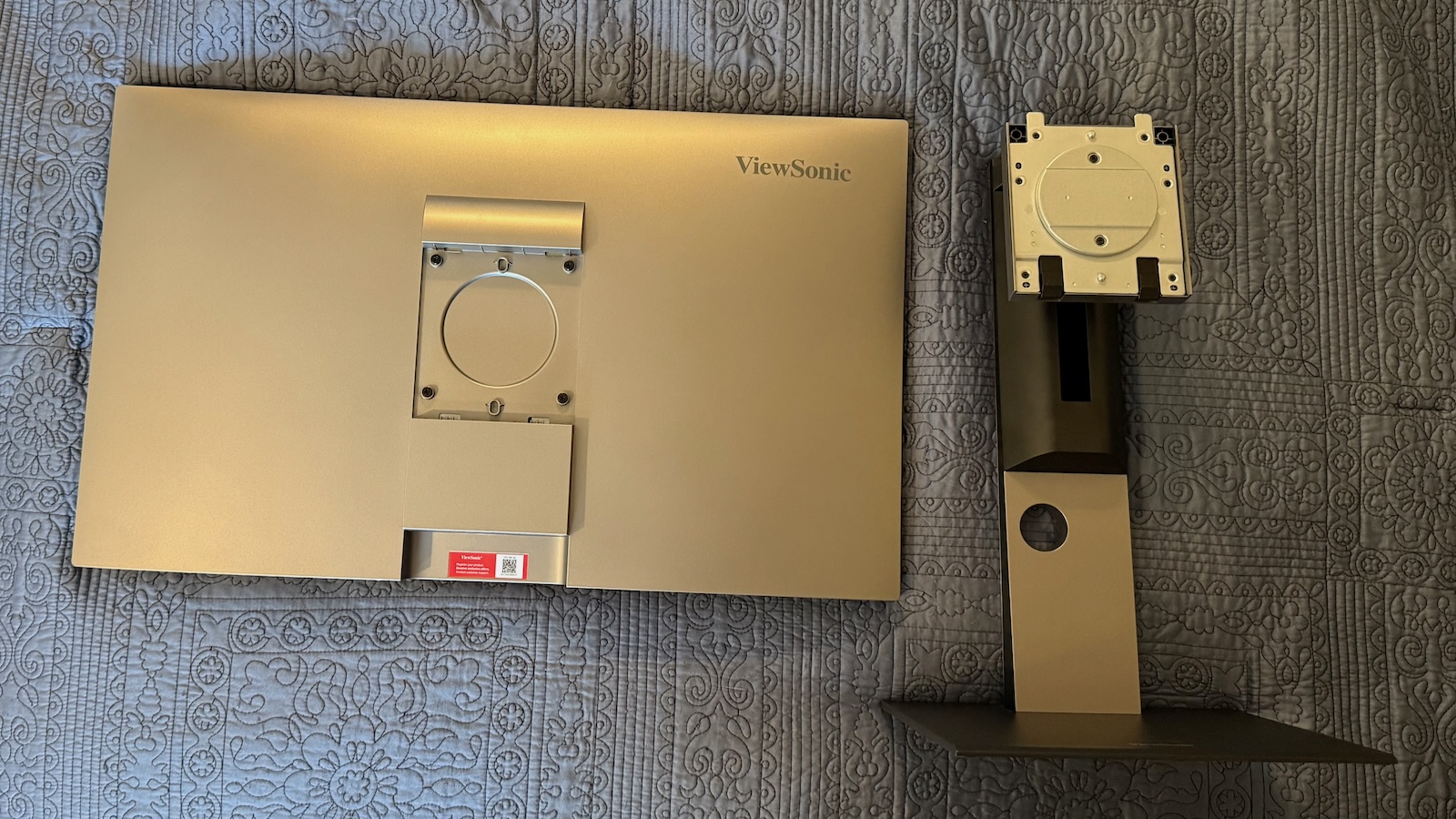
The VP2788-5K arrives in a fairly compact box, and as with most displays it requires a little bit of simple assembly. The hefty metal foot attaches to the display neck with a secure thumbscrew that is recessed slightly into the bottom of the foot to protect against scratching surfaces, and there is a click-in cover attachment for the rear of the display that simply slides into the top of the stand neck. If you prefer a VESA mounting solution, just leave that cover off and you can secure the display to any 100x100 VESA mount.

My first impressions of the general design of the VP2788-5K were relatively favorable, though aside from the sturdy metal stand base the construction is almost entirely black and dark gray plastic. Still, I find the design unobtrusive overall, which is mainly what I'm looking for as the content on the screen is what I'm most interested in. Bezels on the top and sides are fairly slim, with a bit thicker bezel on the bottom including some subtle ViewSonic branding. There's a bit of additional gray ViewSonic branding on the stand base.
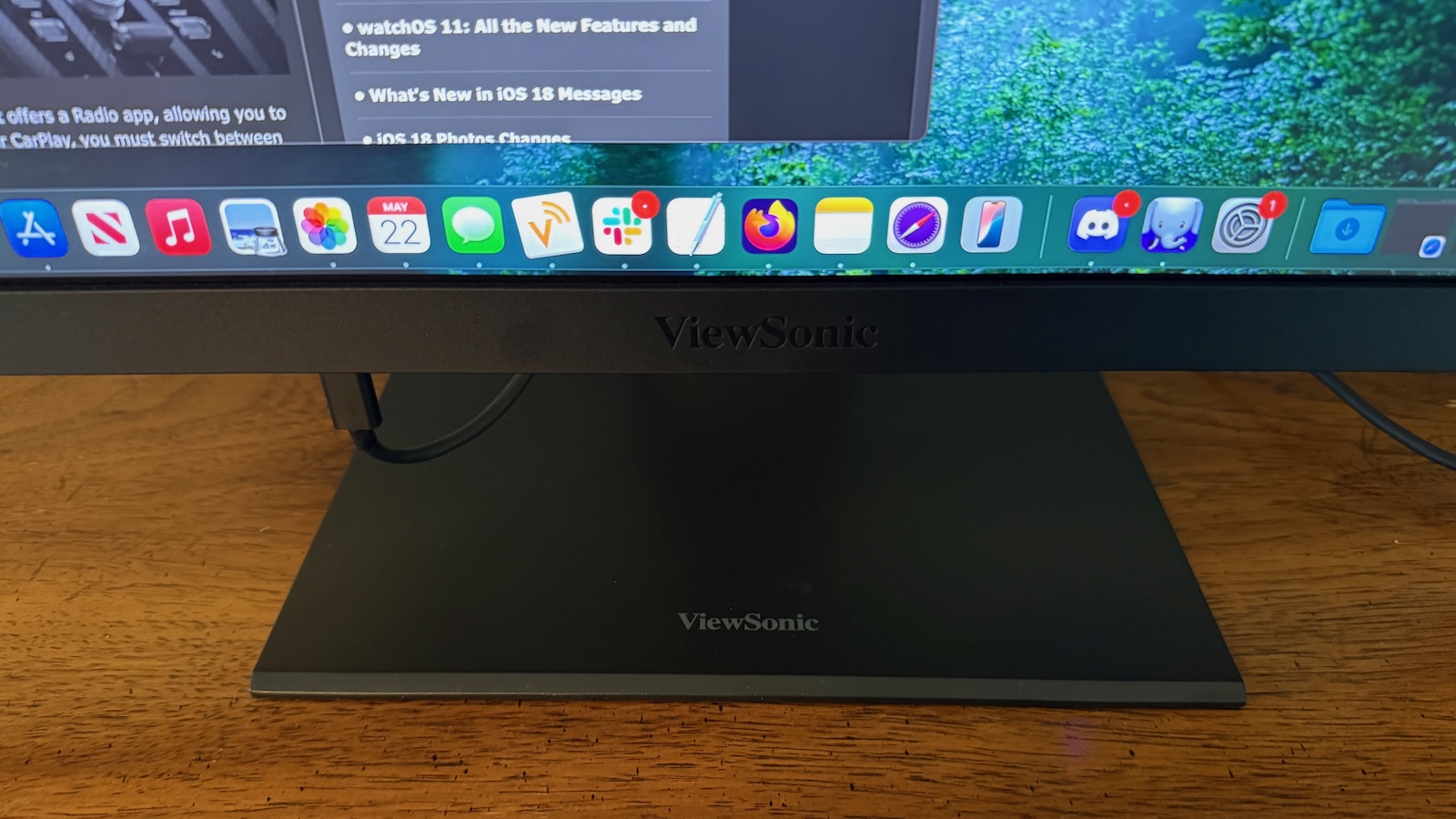
The VP2788-5K excels in positional flexibility, supporting not just height (120 mm range) and tilt (5º forward to 22º back) adjustments but also up to 30º of swivel right or left and 90º of pivot right or left if you prefer to use the display in portrait mode. While the Apple Studio Display supports tilt adjustment on the base model, height adjustment is a $400 stand upgrade, and swivel and pivot are not supported at all.
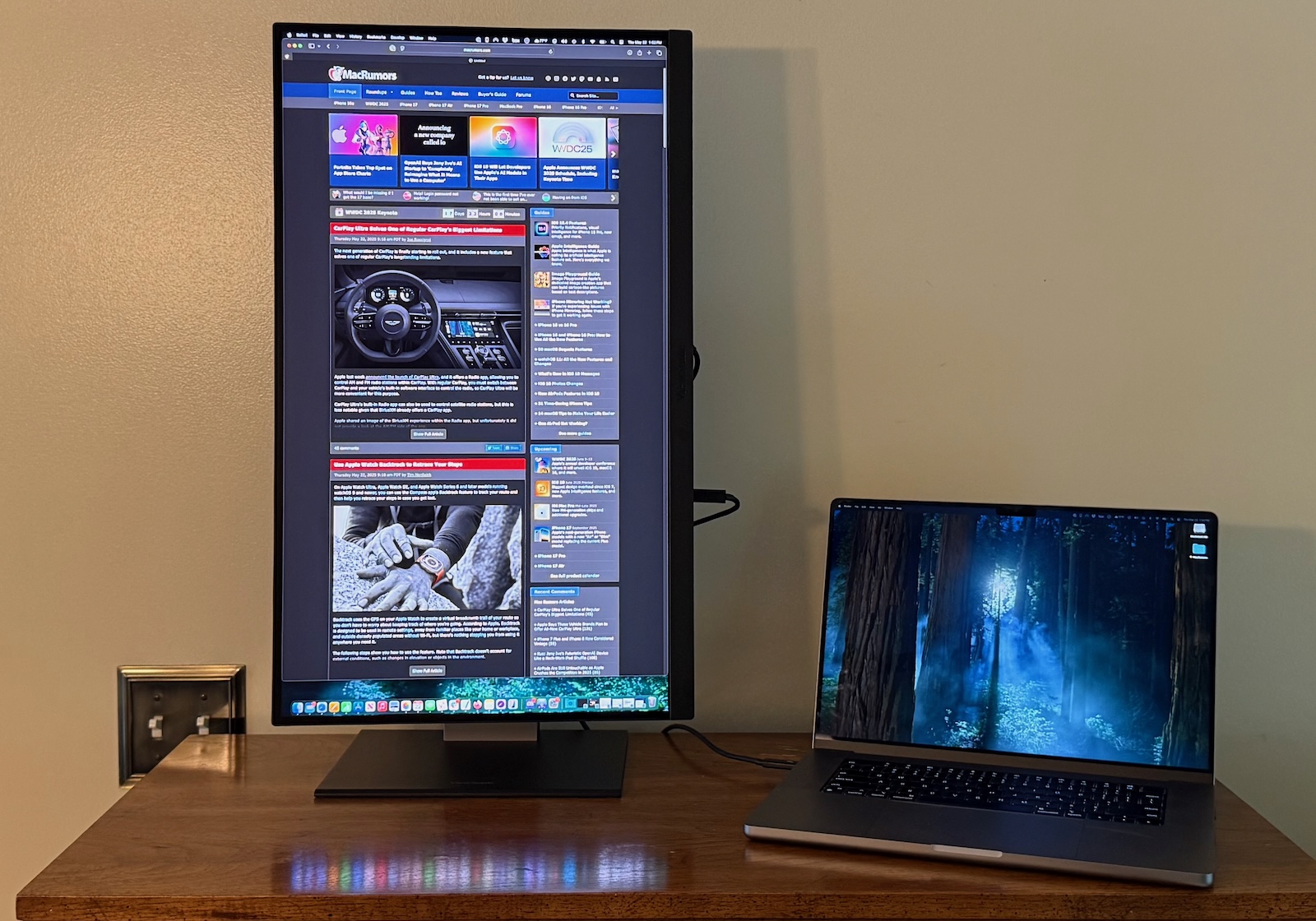
For cable management, the VP2788-5K includes a hole in the stand neck, and it's high enough that it's well hidden behind the display to keep those cables out of sight as much as possible. Only if you push the display toward its highest position will the cables and hole become visible.
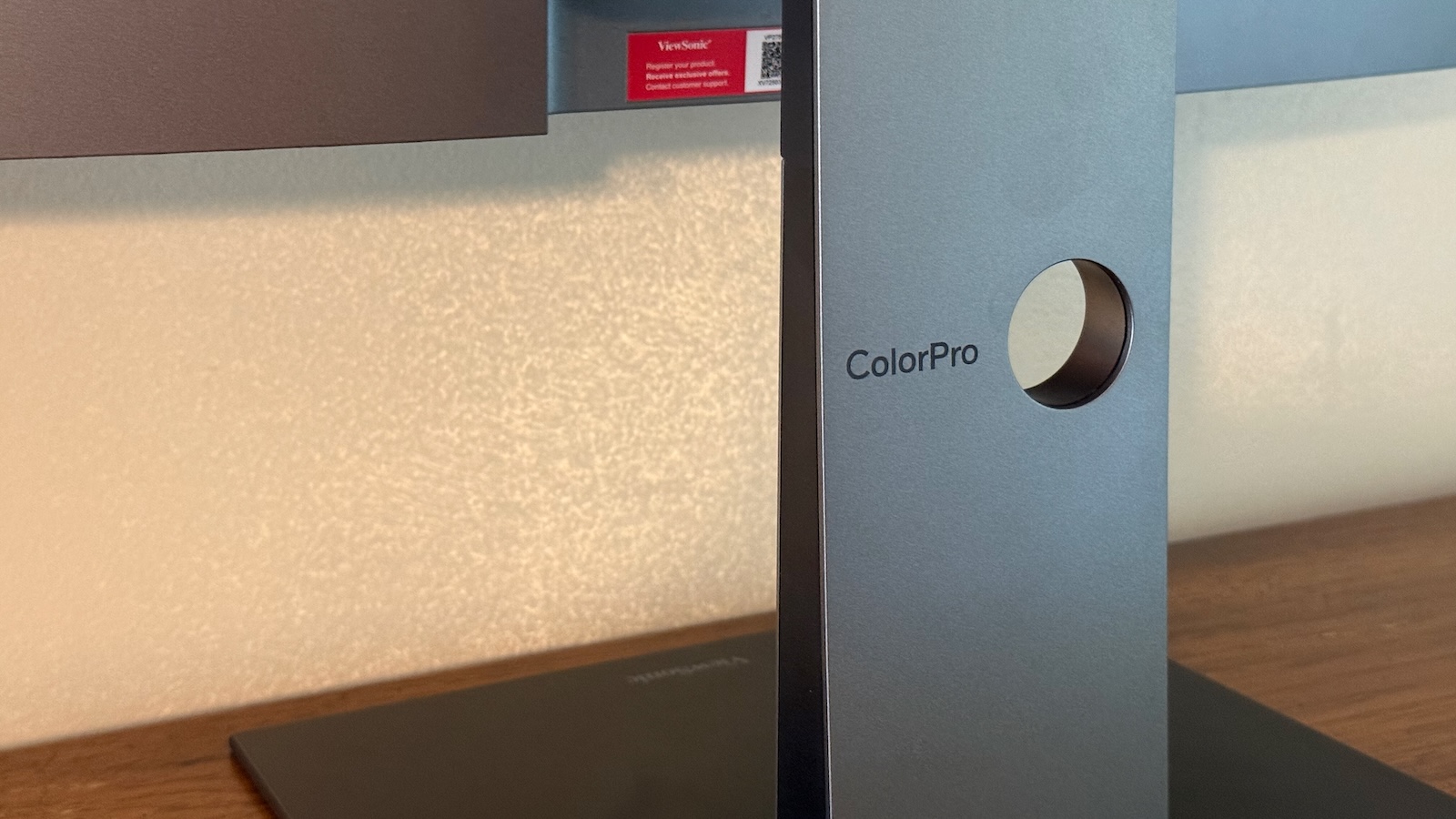
Whereas Apple and LG kept connectivity simple on their displays with only a single Thunderbolt 3 input, ViewSonic has included several options to support not just Macs but Windows PCs and other devices. There's an upstream Thunderbolt 4 port for easy Mac connectivity, plus an HDMI 2.1 port, a DisplayPort 1.4 port, and an upstream USB-C port. On the downstream side, there's a second Thunderbolt 4 port, a 15-watt USB-C port, and a pair of 10-watt USB-A ports, with the extra Thunderbolt port allowing for daisy-chained displays via a single connection on supported computers. Cables for the various connector types are included in the box.
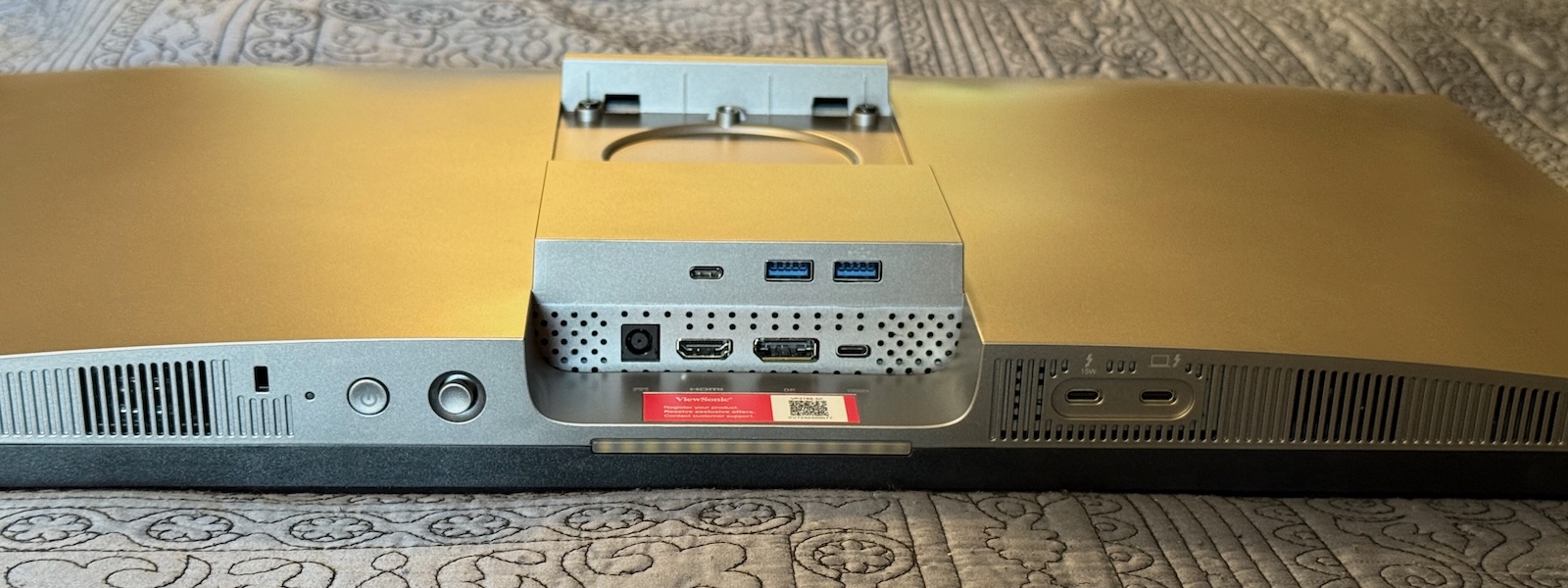
All of the ports are located on the rear of the display in a downward-facing orientation, with some located near the bottom of the display and others sitting up a bit higher on the back. While the downward-facing ports can allow the display to be placed flatter against walls or other surfaces when on a VESA mount and perhaps result in less stress on cables with gravity pulling in line with the cable rather than perpendicularly, they do make cables attached to some of the ports visible from in front of the display.
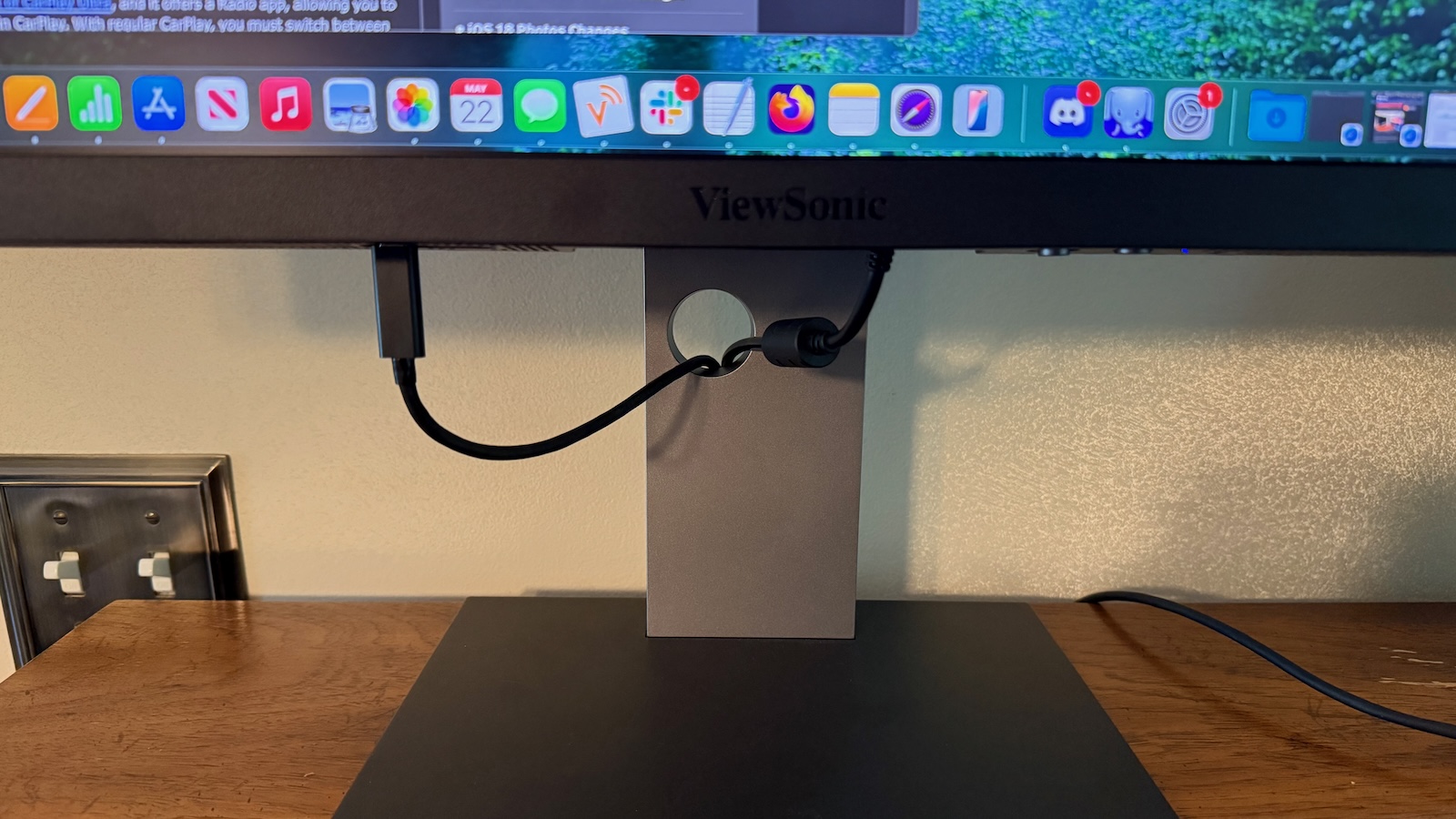
For example, the main Thunderbolt port used for connecting to my MacBook Pro is flush with the bottom of the display, so the cable connector sticks straight down out of the display. That results in some visual clutter, and the connector can be easily bumped if you're trying to move items around under the display. Most of the ports are a bit higher on the back of the display, keeping any connectors hidden away from view, and I'm not entirely sure why all of the ports weren't designed in this way for a cleaner look.
That upstream Thunderbolt 4 port can supply up to 100 watts of charging power to a connected computer, so you won't need an additional power source to keep your MacBook charged up. That's a competitive amount of power output, as many other options offer more like 90 watts or even less. The display does use an external power brick of its own, so keep in mind you will need to hide that away somewhere on the floor or your desk.
Turning to the actual display, the VP2788-5K offers up to 500 nits of brightness, which has proven to be plenty bright in my work enviro... Click here to read rest of article
Article Link: Review: ViewSonic's VP2788-5K Display Offers a Cheaper Alternative to Apple's Studio Display

